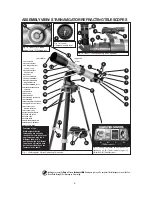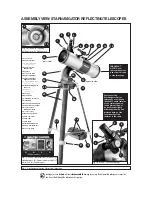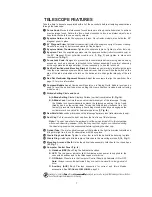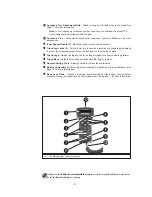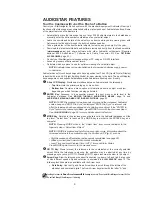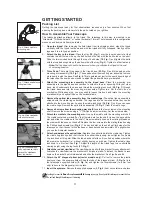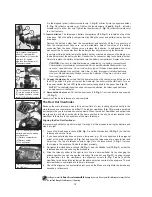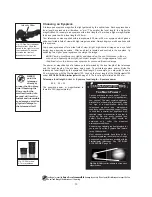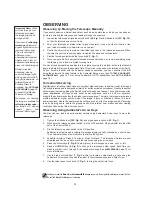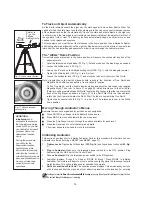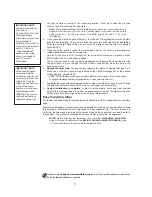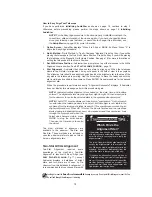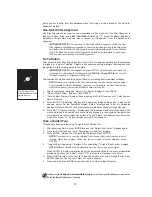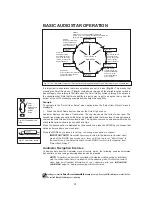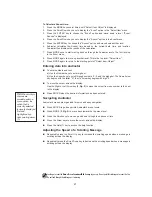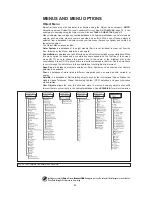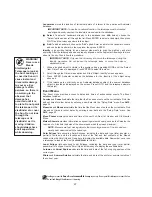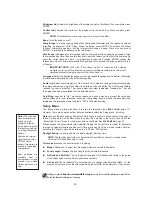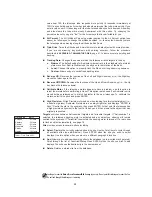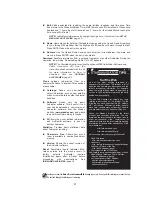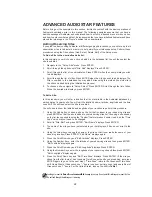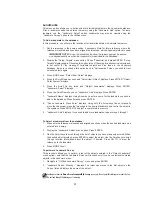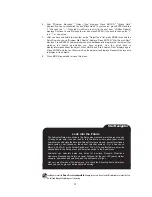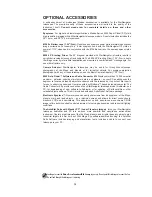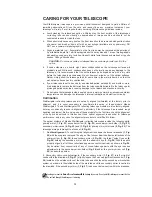
18
Looking at or near the
Sun
will cause
irreversible
damage to your eye. Do not point this telescope at or near the Sun.
Do not look through the telescope as it is moving.
How to Easy Align Your Telescope
If you have performed Initializing AudioStar as shown on page 16, continue to step 2.
Otherwise, before proceeding, please perform the steps shown on page 16, Initalizing
AudioStar.
NOTE: For the Easy Align procedure to function properly, AudioStar must have the
correct time, date and location of the observing site. If you have changed locations
since your telescope was last used, or would like to change this information, see
the Setup Menu on page 25 for more information.
1.
Option Screen - AudioStar displays "Press 0 to Align or MODE fro Menu.” Press "0" to
begin the Easy Align procedure.
2.
North Method -"North Method: 1=True 2=Compass" displays. Press the 1 key if you will be
placing the telescope in the True North Home Position. Press the 2 key if you will be placing
the telescope in the Magnetic North Home Position. See page 16 for more information on
setting the telescope into the Home Position.
3.
Set Alt/Az Home Position - Audiostar then prompts you to set the telescope in the Alt/Az
Alignment home position. See
SET ALT/AZ HOME POSITION
, page 16.
4
Star Alignment - Audiostar then chooses two stars to align upon. When the telescope
slews to the first star for alignment, it may not appear in the field of view in the eyepiece.
The alignment star should be easily recognized and be the brightest star in the area of the
sky where the telescope is pointing. Use the Arrow keys to move the telescope until the
star is visible and centred in the eyepiece. Press ENTER. Repeat procedure for the second
alignment star.
When the procedure is performed correctly, "Alignment Successful" displays. If Audiostar
does not display this message, perform this procedure again.
NOTE: Audiostar locates alignment stars based on the date, time, and location
entered. The alignment stars may change from night to night. All that is required is
for the observer to centre the selected stars in the eyepiece when prompted.
NOTE: The GO TO key also allows you to perform a "spiral search." A spiral search
is useful when the telescope slews to an object, but that object is not visible in the
eyepiece after the telescope finishes its search. (This sometimes occurs during an
alignment procedure.) Press GO TO when the slew is finished and the telescope
starts slewing in a spiral pattern at a very slow speed around the search area. Look
through the eyepiece and when the
object does become visible, press
MODE to stop the spiral search.
Then use the Arrow keys to centre
the object.
Two other methods of alignment are
available to the observer: Two-Star and
One-Star. These methods are included in
case the observer prefers to pick out his or
her own alignment stars.
Two-Star Alt/Az Alignment
Two-Star Alignment requires some
knowledge of the night sky. Two-Star
Alignment is identical to Easy: Align (see
EASY (TWO-STAR) ALIGN
, Pg. 17), except
Audiostar displays a database of bright
stars and
two stars are chosen by the
observer from this database for alignment. It
is recommended that you choose stars with
Which One’s the
Alignment Star?
If Audiostar has chosen an alignment star
with which you are unfamiliar, how can you be
sure if the star in your eyepiece is really the
alignment star?
The rule of thumb is that an alignment star is
usually the brightest star in that area of the
sky. When you view an alignment star in an
eyepiece, it stands out dramatically from the
rest of the stars in that portion of the sky.
If you have an obstruction, such as a tree or
a building blocking your view of the alignment
star, or if you have any doubts at all about the
star that has been chosen, no problem. Just
press the Scroll Down key and Audiostar will
find another star to align upon.
Summary of Contents for starnavigator ng series
Page 8: ...This page folds out...

